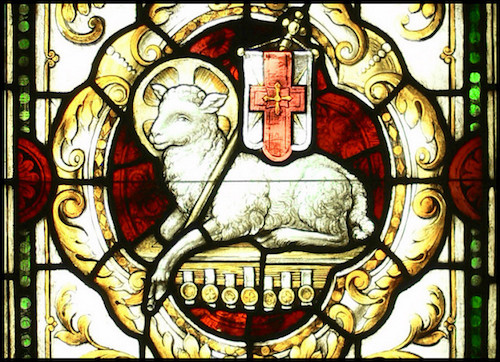We run our website the way we wished the whole internet worked: we provide high quality original content with no ads. We are funded solely by your direct support. Please consider supporting this project.

Crucifixion of the Warrior God Update
Well, I’m happy to announce that Crucifixion of the Warrior God is now available for pre-order on Amazon!
Like many of you, I found that the clearer I got about the non-violent, self-sacrificial, enemy-embracing love of God revealed in Christ, the more disturbed I became over those portraits of God in the Old Testament that depict him commanding and engaging in merciless violence. And the more disturbed I became over these portraits, the less satisfied I was with the many Evangelical attempts to defend their justice.
At the same time, since I believe, on the authority of Jesus, that the entire Old Testament is divinely inspired, simply dismissing these portraits as expressions of the ancient Hebraic primitive view of God was not an option. In fact, the New Testament as well as the church tradition teaches us that all Scripture is “God-breathed” (2 Tim 3:16) for the ultimate purpose of bearing witness to Jesus, and especially to his sufferings on the cross (e.g. Jn 5:39-40, 46-47; Lk 24:25-27, 44-46; 1 Cor 15:3).
So, at some point I realized that the task we need to face is not about how to make the Old Testament’s violent portraits of God look a little less nasty. The task is rather to disclose how these portraits point to the crucified Christ. How, for example, do the various portraits of God commanding the Israelites to mercilessly slaughter every living thing in certain regions of Canaan bear witness to the non-violent, self-sacrificial, enemy-embracing love of God revealed on Calvary?
About ten years ago I felt compelled to face this seemingly impossible question head on. I began to make headway when I heeded the wise advise of an early church father named Origen (c184-254C.E.). He advises us that when a portrait of God in Scripture ascribes to him actions or attributes that conflict with what we know to be true about God in Christ, we must not get frustrated and look for hasty solutions, including the solution of dismissing the portrait as uninspired. We must rather continue to trust that all Scripture is “God-breathed” (2 Tim 3:16) while humbly asking the Spirit who “breathed” this Scripture to help us discern the true meaning of this portrait.
As I practiced this, I at some point realized that, if all Scripture is supposed to somehow bear witness to the revelation of God on the cross, then I should read all Scripture through the lens of the cross. I will leave to readers to decide whether what happened next was of the Holy Spirit or not, but to my surprise, I began to experience something like what happens when you look “the right way” at a “Magic-Eye” picture. Almost like a three dimensional object rising out of what previously looked like random patterns on a page, I began to see how the revelation of God on Calvary was present in portraits of God that previously looked antithetical to this revelation!
This unexpected insight launched me on an equally unexpected and very exciting ten-year research and writing project in which I uncovered a mountain of evidence that confirms, at least to my mind, the correctness of this insight. And now, finally, I am ready to go public with my findings. On April 1, Fortress Press will release my two-volume work, The Crucifixion of the Warrior God.
I should forewarn readers that The Crucifixion of the Warrior God is a highly academic and very comprehensive work. It is approximately 1400 pages in length and includes extensive footnoting. While this is the book that academically inclined readers should read, for it presents the most comprehensive and compelling case for my thesis, less academically inclined readers should know that I will follow this book up with a much shorter and much less academic book entitled Cross Vision: Making Sense of Violence in the Old Testament. It is scheduled to be released on August 1, 2017.
I know that many struggle with the disturbing portraits of God in Scripture the way I did, for like me, you believe both that Jesus Christ is the definitive revelation of God while also believing that all Scripture is inspired. My prayer is that these books will help readers get completely free from any suspicion that the God who is fully revealed on the cross is actually capable of commanding genocide and engaging in other atrocities ascribed to him in Scripture, even as it helps strengthen readers conviction that all Scripture, including its violent portraits, is inspired by God for the purpose of bearing witness to the cross.
Photo credit: Waiting For The Word via Visualhunt.com / CC BY
Category: General
Tags: Bible, Crucifixion of the Warrior God, Cruciform Theology, Jesus
Related Reading

When Jesus Referred to Canaanites as “Dogs”
Last week I discussed Paul’s harsh language regarding his opponents, the worst example being his reference to certain opponents as “dogs” (Phil 3:2). I suggested that such language simply reflects the fact that Paul wasn’t perfect, as he himself admitted. Several people pushed back on this suggestion by pointing out that Jesus once referred to…

Are Christians supposed to tithe?
Question: I and my husband have become increasingly uncomfortable with the many sermons on tithing we’ve been recently hearing at our church. Our pastor insists we tithe 10% to the church regardless of what else we give to other ministries. It seems like it has been reduced to a formula: Give ten percent and be…

Sermon Clip: Extravagant Forgiveness, Extravagant Love
Greg Boyd had the wonderful opportunity to guest speak at a great church in Carlisle, PA called Carlisle BIC. He spoke on the topic of forgiveness and love. In this short clip, Greg describes how a prostitute was being judged by the Pharisees, but Jesus came to her rescue. You can listen to the full…

Satan or God: Who Tempted David to Sin?
The author of 2 Samuel says that Yahweh caused David to sin by taking a census of his military personnel (2 Sam 24:1) while the author of 1 Chronicles attributes this temptation to Satan (1 Chr 21:1). It is clear that the author of 2 Samuel had no problem accepting that Yahweh was capable of…

Sermon Clip: Hunger Games
To begin the series on emotional intelligence and the roles this plays in our relationships, Greg Boyd introduces the foundational teaching of the entire series. Here’s a hint, it’s LOVE. In the full sermon, Greg takes a look at the role Jesus plays in our relationships and the importance of letting Christ be the source…
